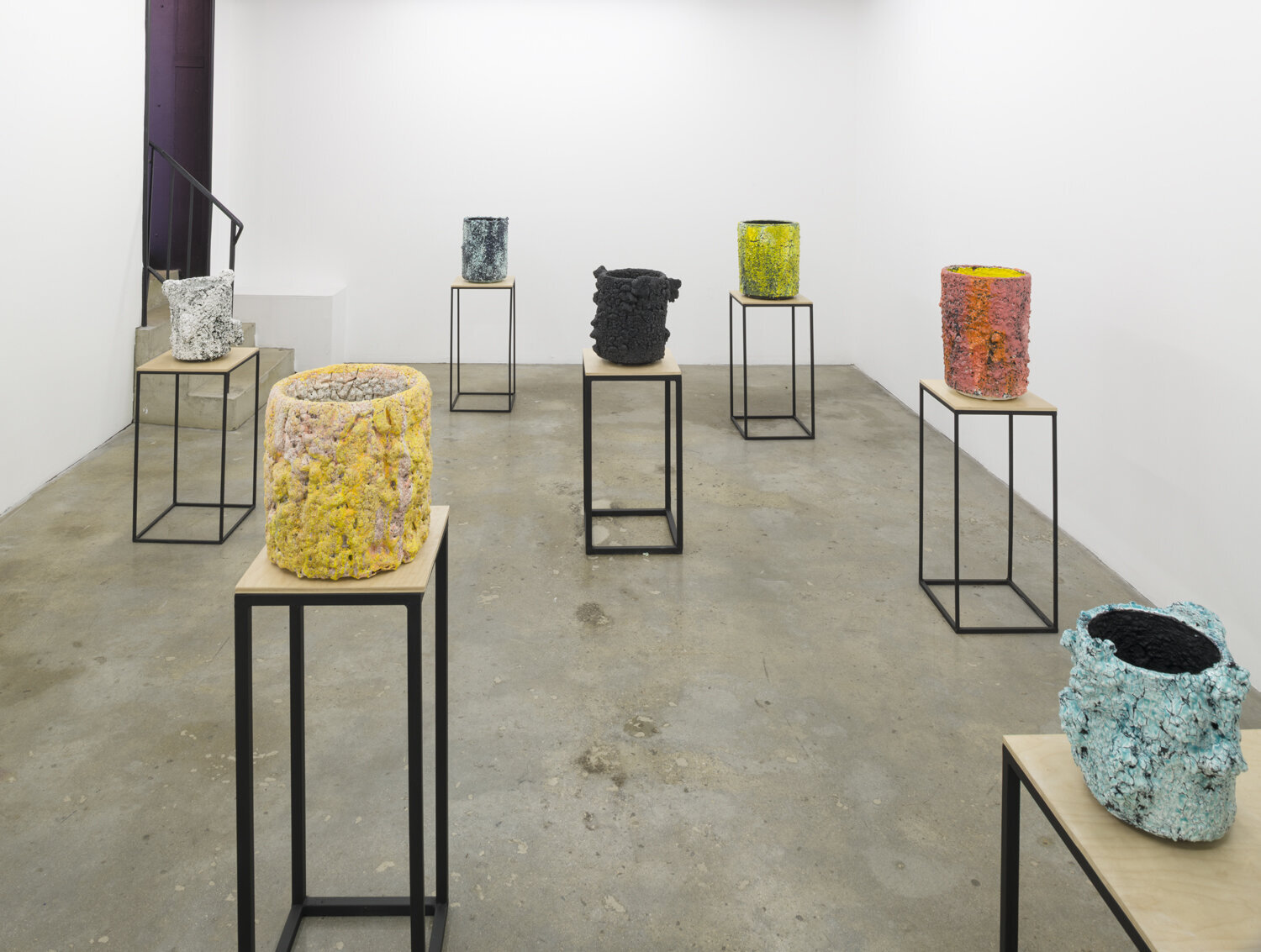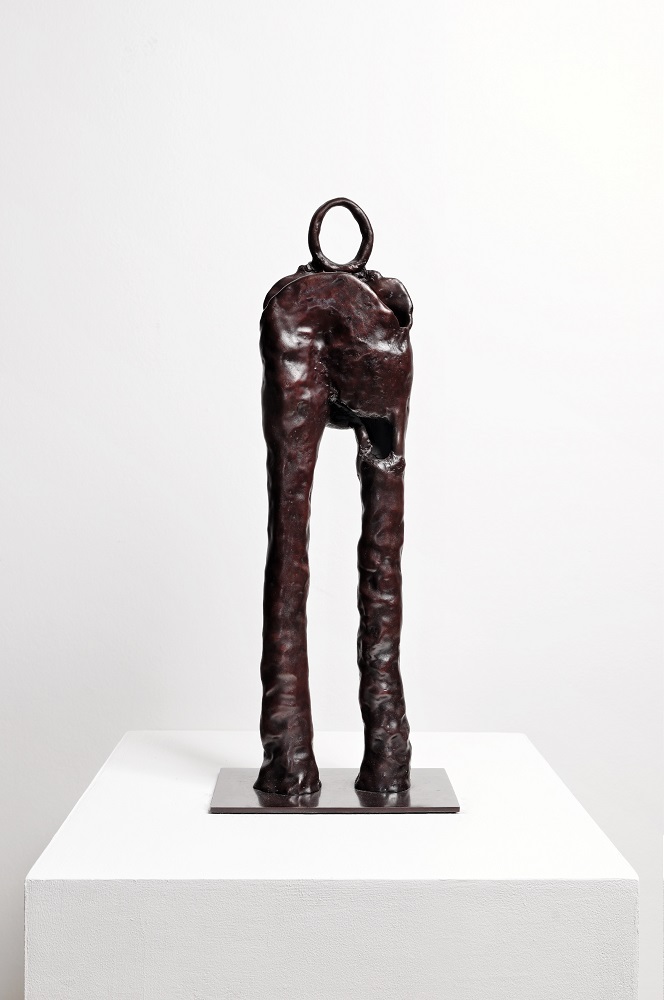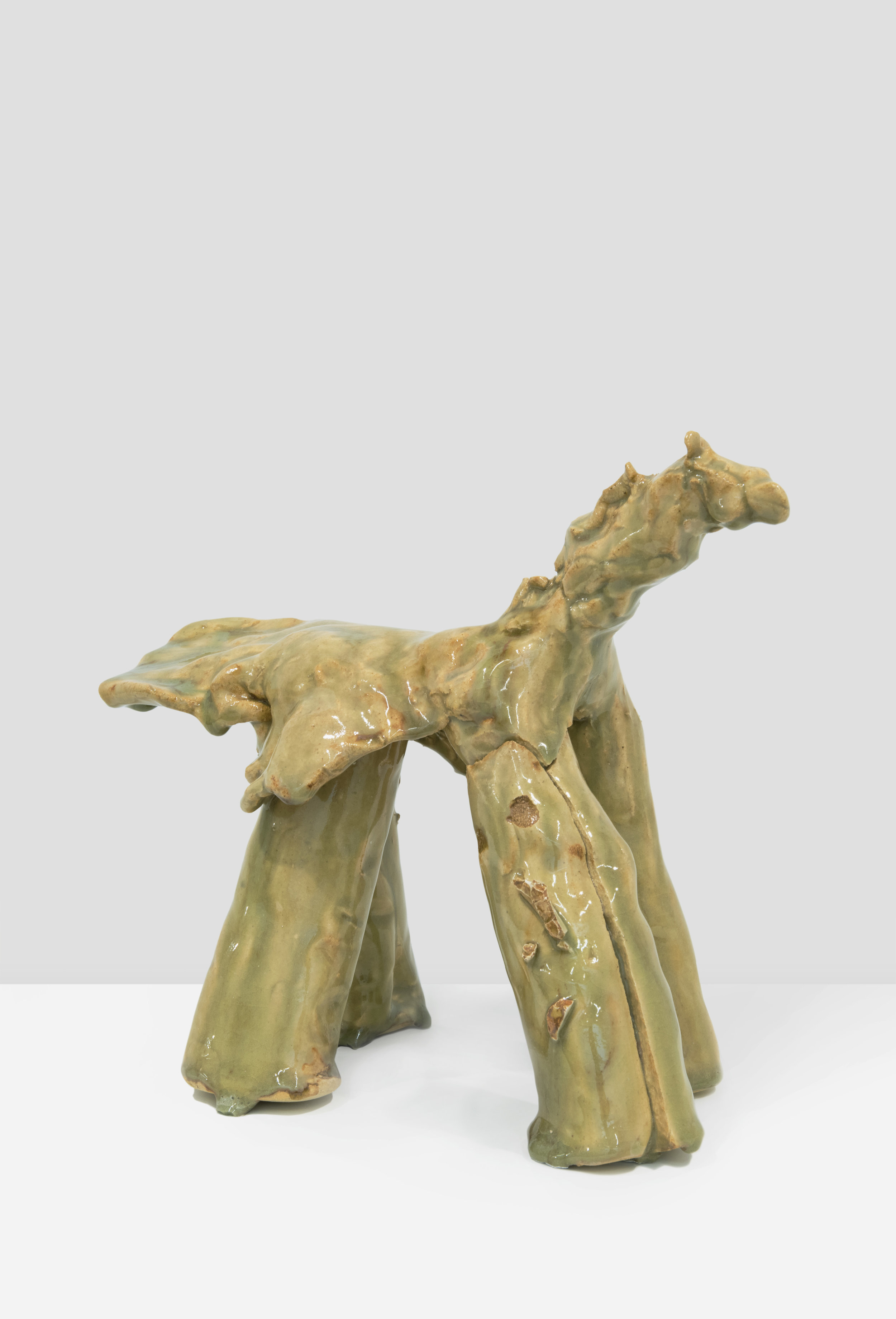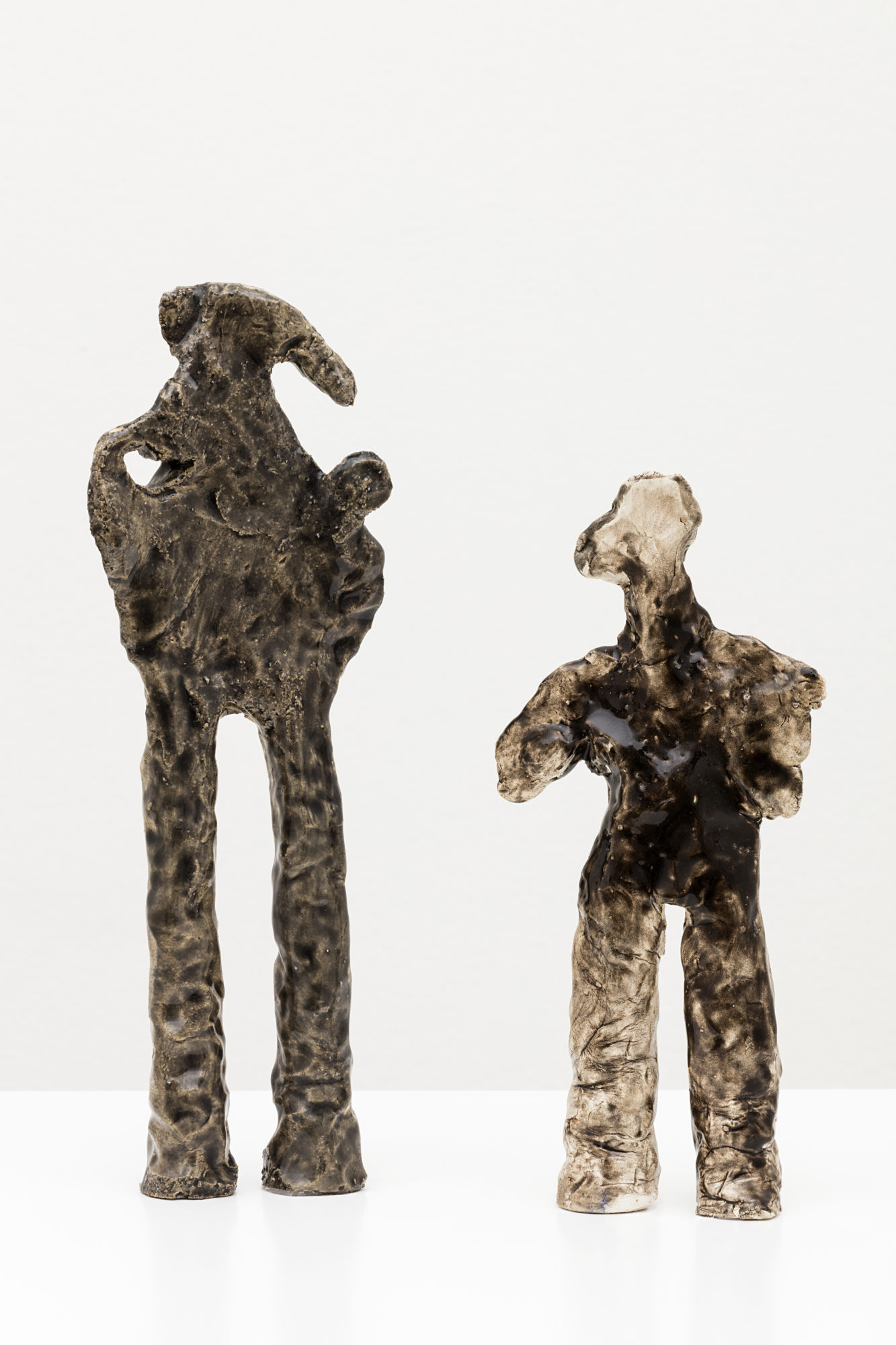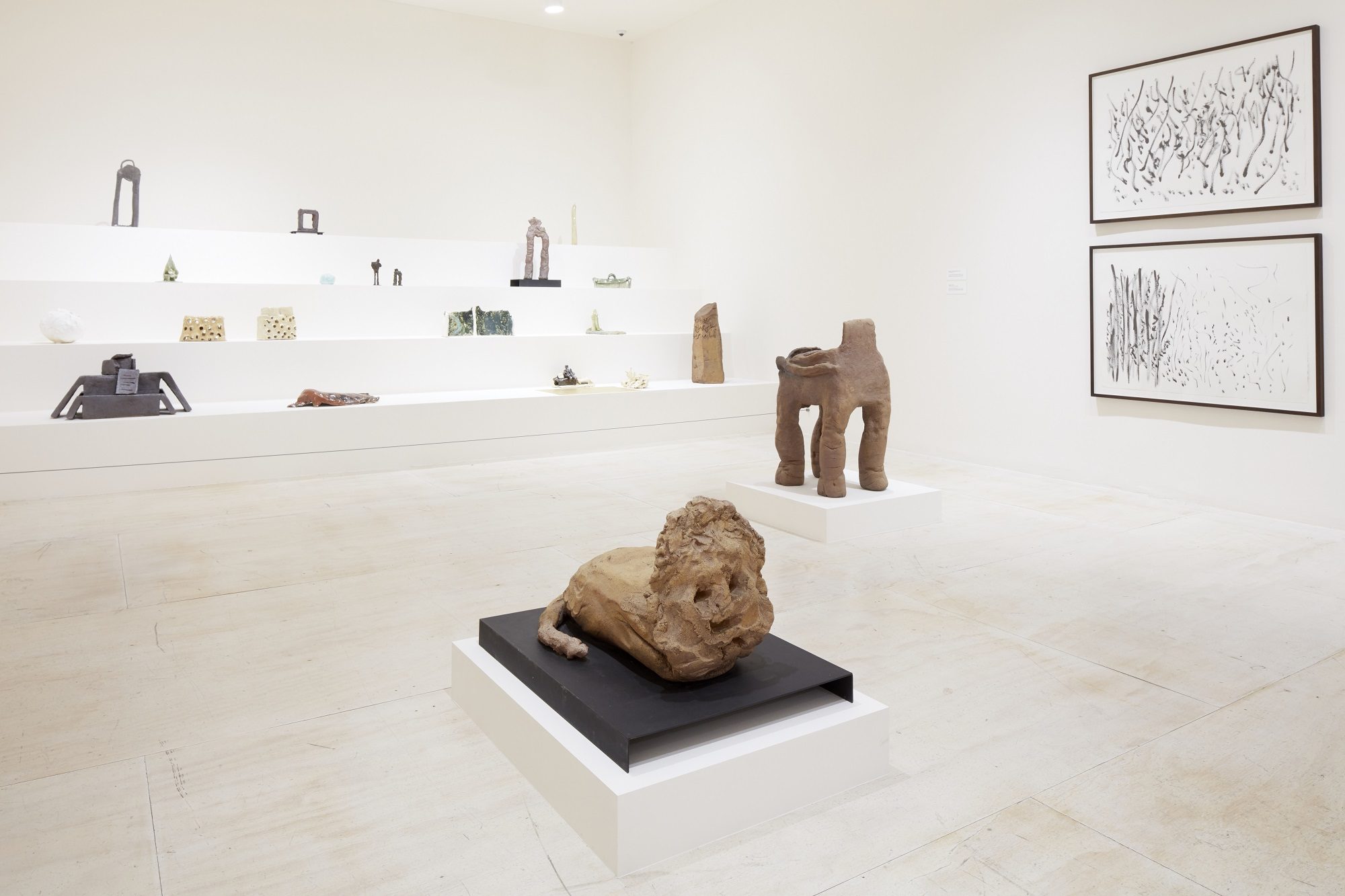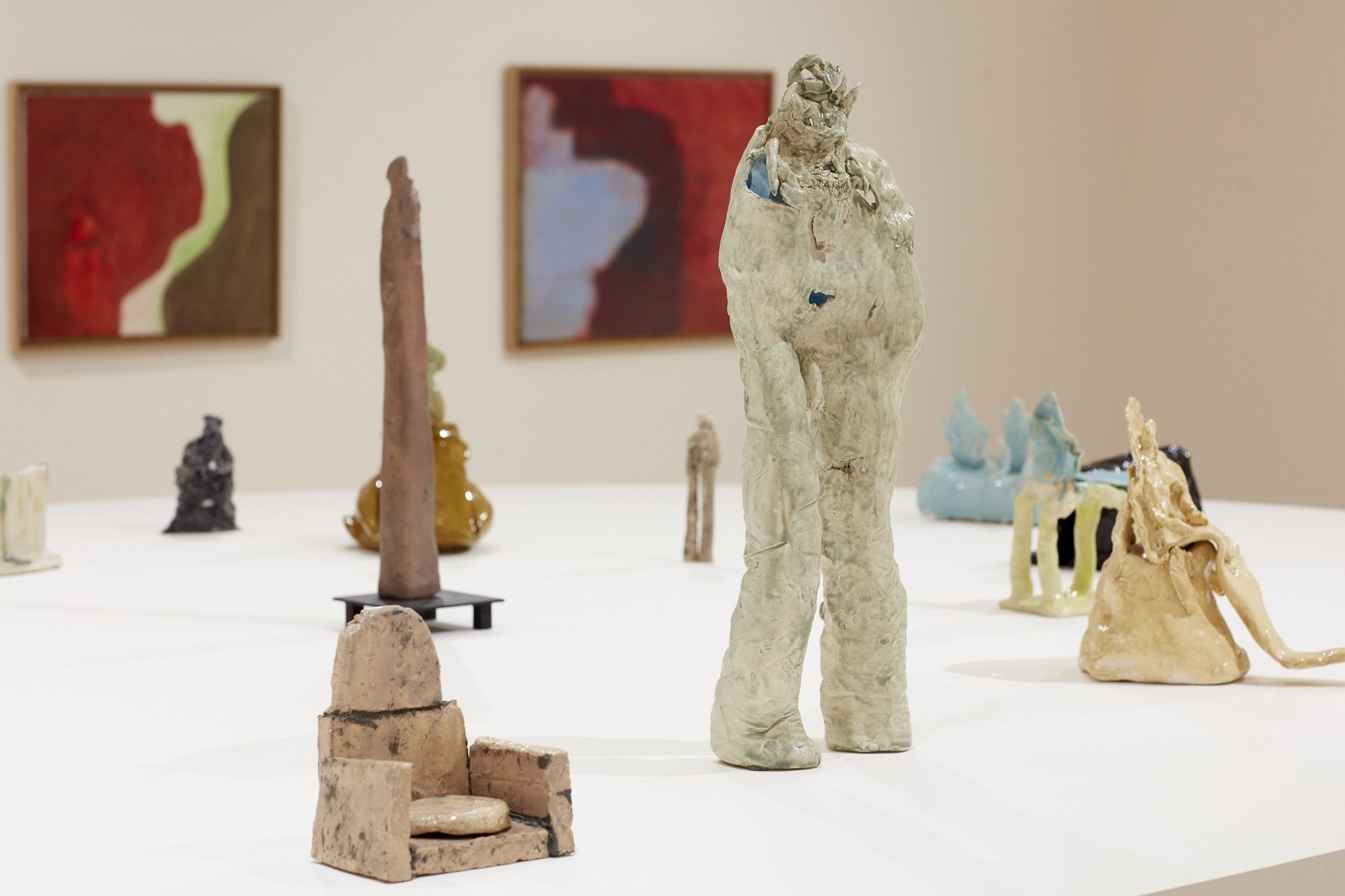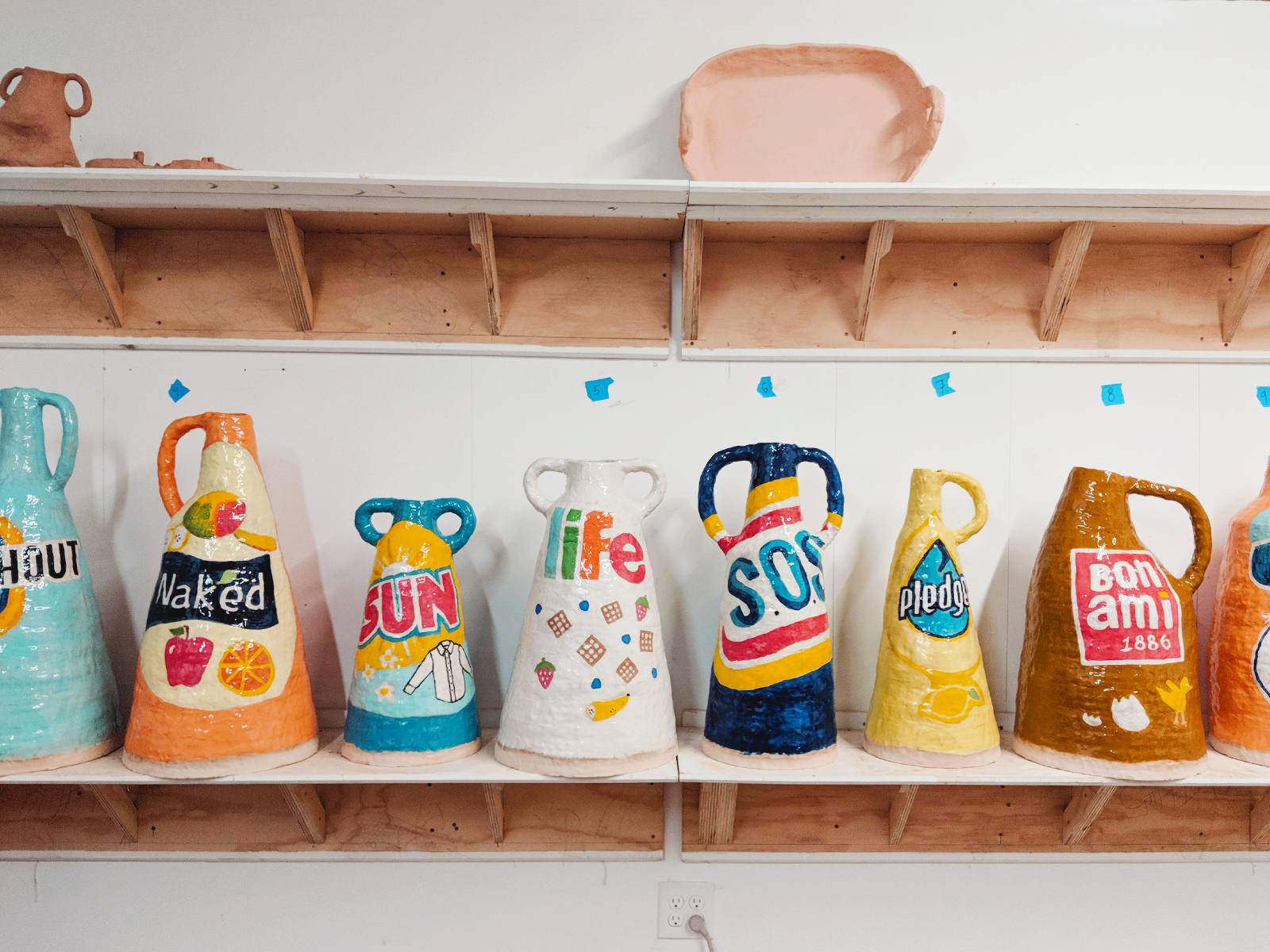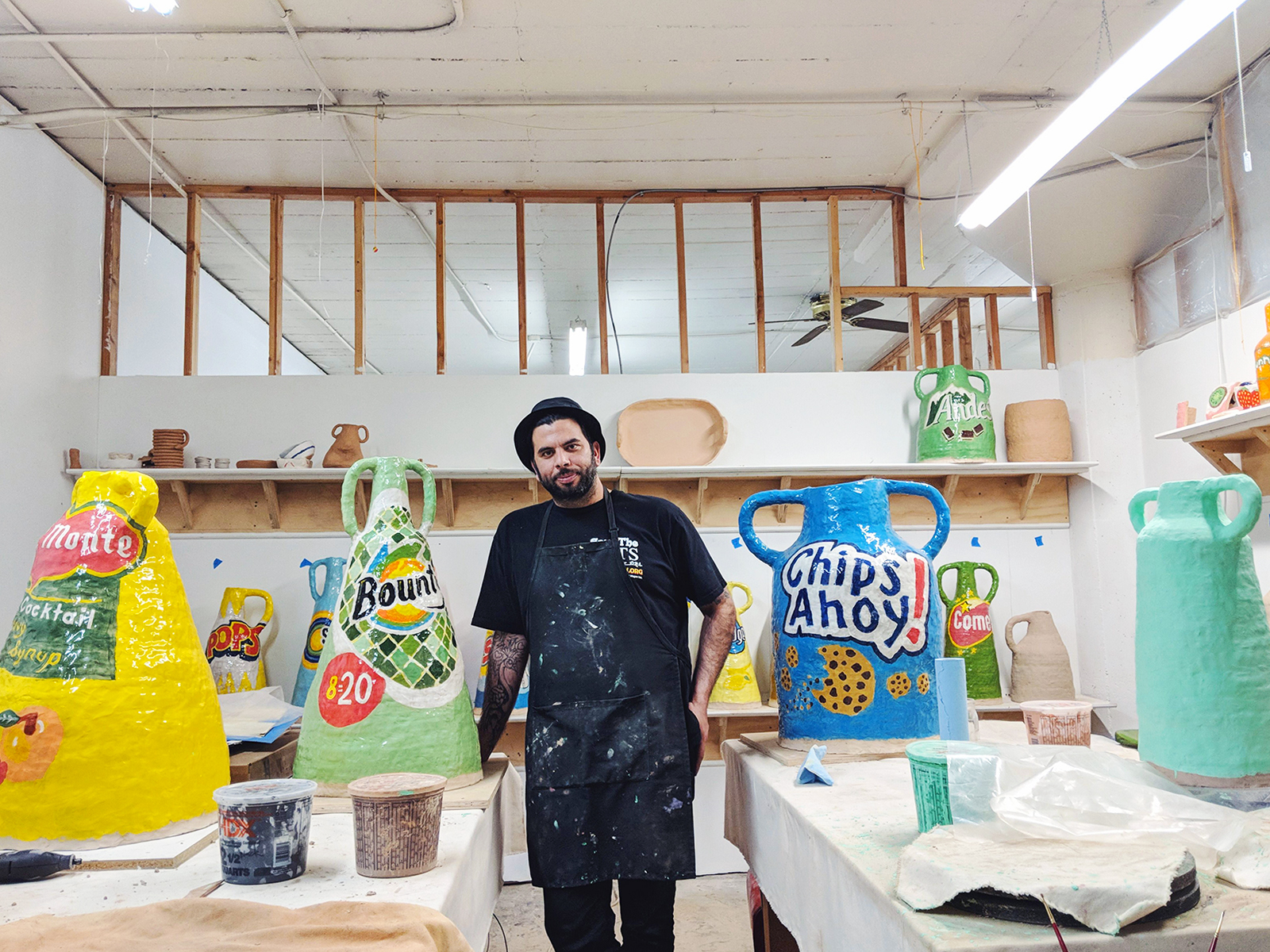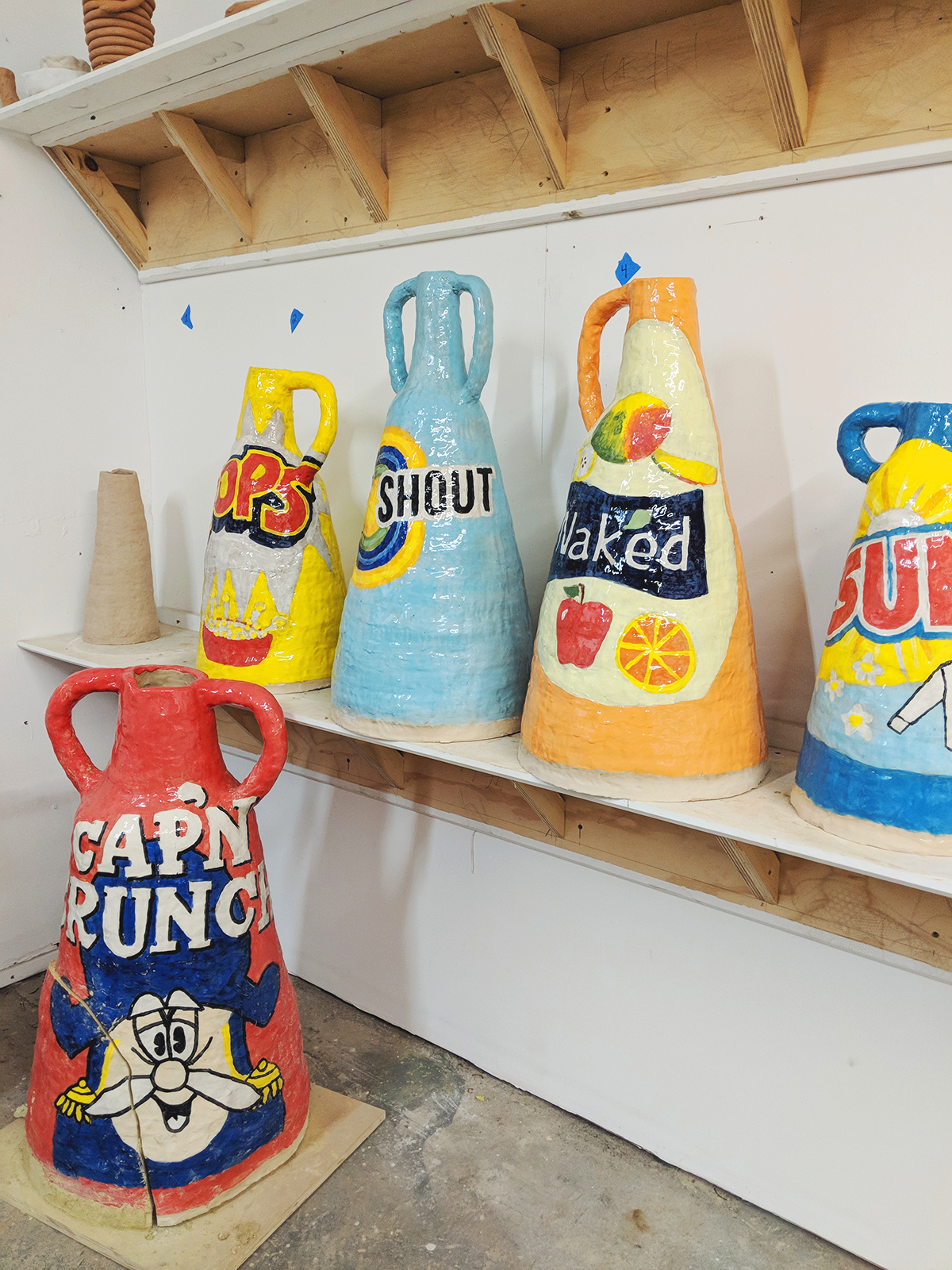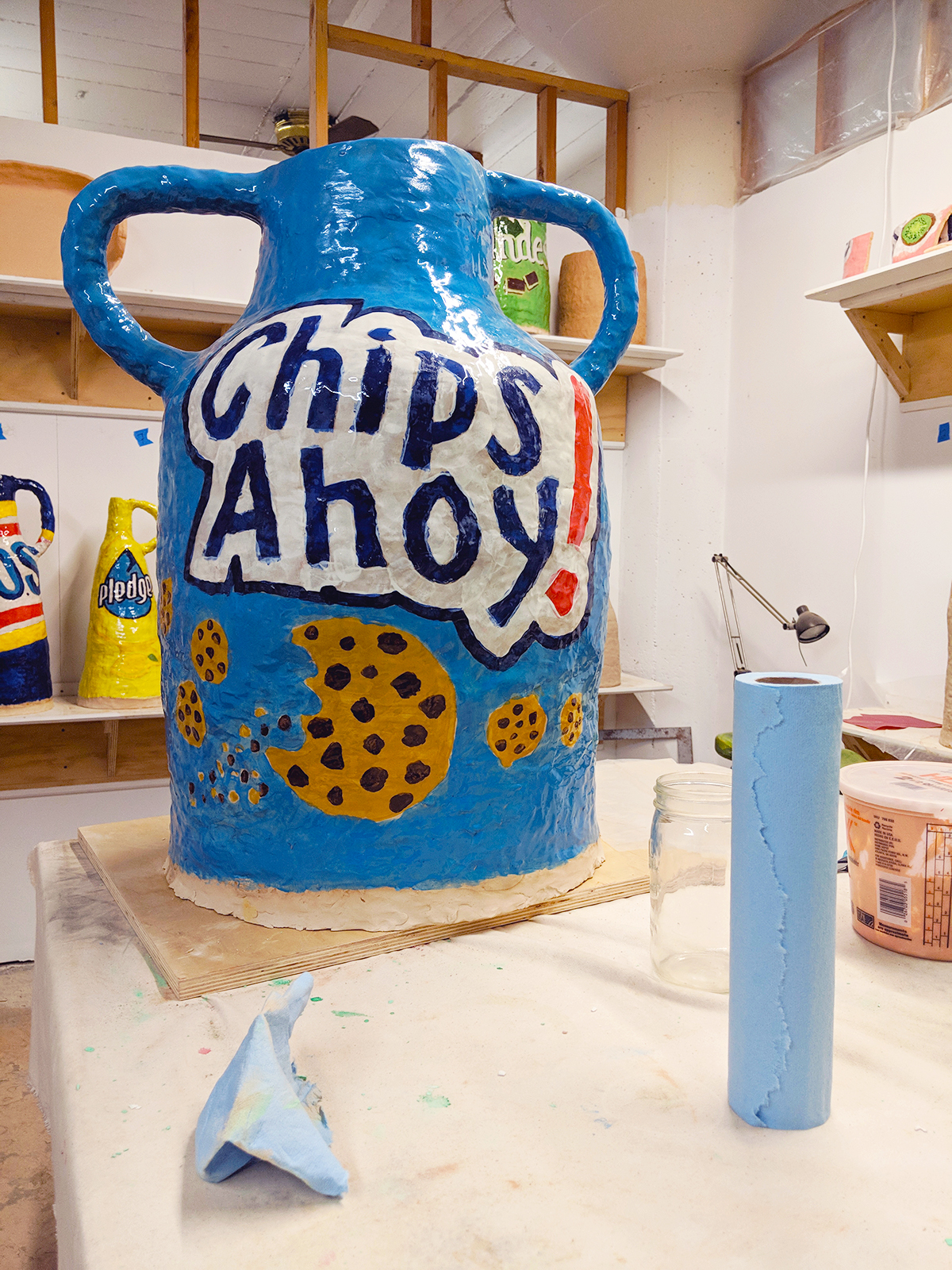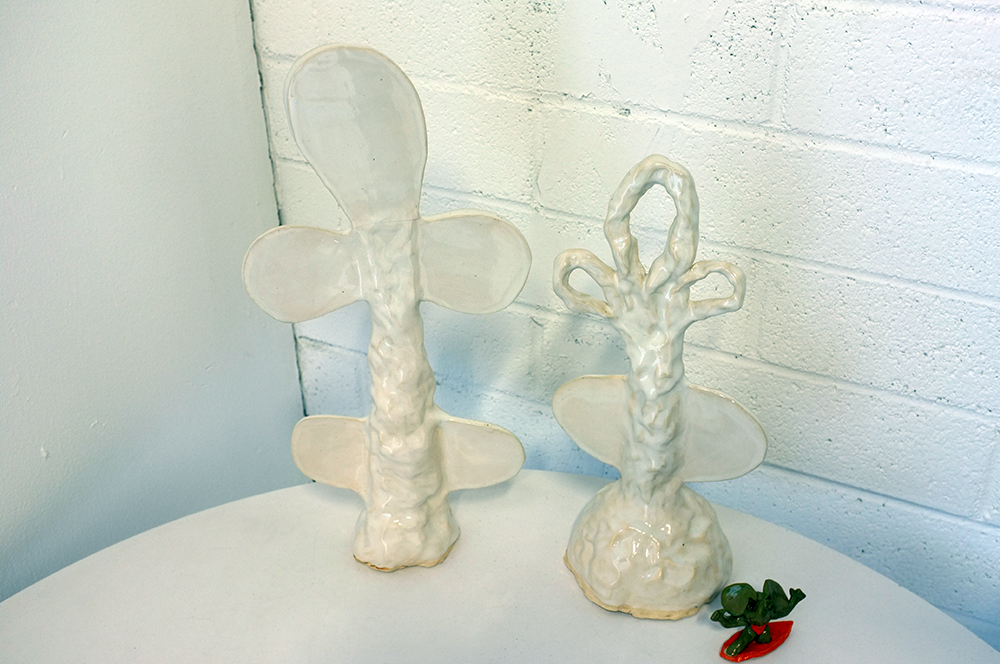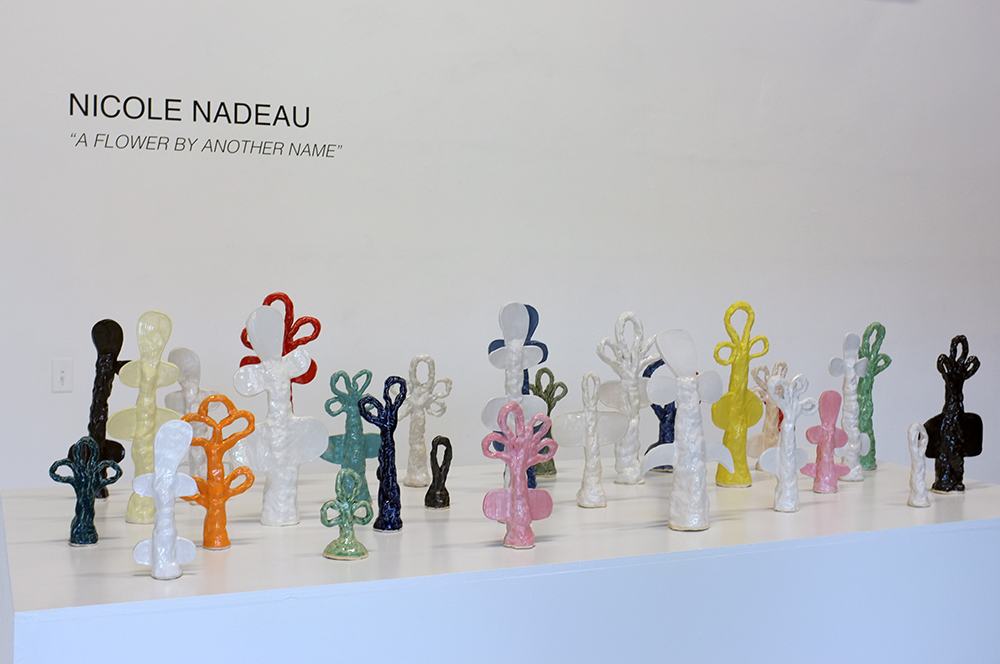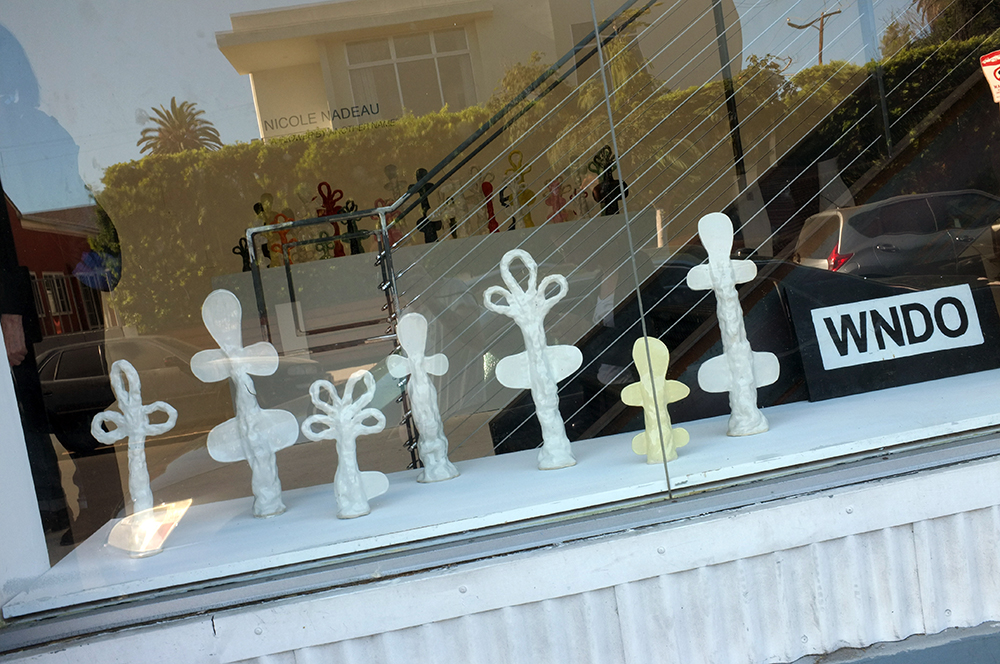Trust Me, Be Careful, I Like Your Shoes is an emotional polygraph that let’s you see through the eyes of a newborn.
Zipora Fried
Let Them Talk, 2024
signed by artist, verso
colored pencil on archival museum board
paper: 60 x 80 inches (152.4 x 203.2 cm)
framed: 61 5/16 x 81 5/16 x 1 3/4 inches (155.7 x 206.5 x 4.4 cm)
text by Summer Bowie
At the moment of every human’s birth, our field of vision is best at about twelve inches, or roughly the distance between a mother’s eyes and her breast. This is about how close you want to get to the work of Zipora Fried once you’ve seen it from a distance. It is like looking at life through the lens of a baby who is feeling and sensing the world wholly with their right brain. In Trust Me, Be Careful, I Like Your Shoes, Zipora Fried’s debut solo exhibition at Sean Kelly Los Angeles, the artist continues to refine her ability to conceal just enough of the scrutable so that you can properly feel the work before you know how to think about it. These works blur the lines between figurative and abstract, portrait and landscape, monumental scale and unsettling fragility. It is ultimately performance as a form of conceptual practice.
Although it is a practice of interminable repetition, each time an idea is revisited, it is done so from a novel perspective. Playing off of her ’09 exhibition at On Stellar Rays called Trust me, be careful, which itself was taken from the text of a “drawing” in that exhibition which read: “The stammering of history, trust me, be careful, who has the sickest shoes, trust me, be careful,” it is a story of marching through the cyclical passage of time with an acute awareness of how each new step is unique to the last.
Zipora Fried
The Glass Octopus, 2024
signed by artist, verso
colored pencil on archival museum board
paper: 60 x 96 inches (152.4 x 243.8 cm)
framed: 61 5/16 x 97 1/4 x 1 3/4 inches (155.7 x 247 x 4.4 cm)
From a distance, tiny individual lines of color blur together into one fluid, unending stroke, which makes for an experience that is as philosophical as it is emotional. It feels Hegelian in both the interconnected idealism that it exemplifies, as well as in the synthesis of opposing perspectives that are resolved in the precision of their balance. Then again, at close proximity, they are Kierkegaardian in their boundless detail; millions of individual strokes existing and intersecting on their own discrete paths. There is certainly something divine in these details.
It is this tension that beckons the viewer to adjust their vantage point multiple times. If you stand and observe people engaging with the work, you start to see interesting patterns emerge. Each piece is initially experienced from a generous distance, moving from one side to the next. As you approach, new details began to emerge with each successive step forward. And from as close as common courtesy will allow, people tend to again start scanning from one side to the next before they back up to see it anew. If one were to trace the footsteps of all who attended the opening reception, I imagine one might find a sequence of marks that resemble the second half of a coherent dialogue between the floor and the walls.
These are works that must be experienced in person. They float in their frames unmediated by glass, allowing the viewer to get in close enough to be visually enveloped by fields of color. From here we can see the gritty texture of the colored pencil. We can see just how these tightly-controlled strokes of equal length and exacting proximity start to slowly and delicately unfold into loose, sweeping strokes that breathe easy and intersect with other colors freely. These are the moments that allow for the character of each piece to express itself, which is ultimately only scrutable from a distance.
The titles of her pieces often convey an oscillation of contradicting thoughts and feelings. There are the colored pencil drawings A Sad Parade (2025), I Was Perfect, I Was Wrong (2025), as well as the massive sculptural drawing on paper titled All I Thought and Forgot # 3 (deep cobalt green) (2016). One can’t help but wonder how such a thin and sweeping scroll of paper could ever support the imposing weight of such densely layered marks. These are the contradictions that typify the human experience and Fried is a master mark maker with an acute understanding of the affecting power of color. Her hand paces back and forth like the needle of a polygraph test, communicating an inner truth that is not necessarily involuntary, but it is perhaps articulated more clearly this way than in words.
Zipora Fried
All I Thought and Forgot #3 (deep cobalt green), 2016
colored pencil on paper
312 x 53 1/2 inches (792.5 x 135.9 cm)
This is visual art that encourages you to look closer and alludes to the possibility that you are overly dependent on your eyes. As if to suggest that seeing less allows you to feel a lot more. On either side of the gallery we find two of Fried’s ceramic sculptures. They are inspired by ink drawings that are not on view. They are also inspired by kokeshi dolls; a Japanese tradition of wooden figurines that features a head with painted face, and a body without arms or legs. However, with these sculptures, even their faces are obscured by a crown of dripping hair. A singular, unending moment that reveals nothing but ambivalence. Again, the artist is choreographing our movement around an object without beginning or end. Seen from the other side, we might consider that when we allow ourselves to feel more, it’s often easier to see things more clearly.
Zipora Fried
Miron, 2025
glazed ceramic
51 x 16 3/4 inches (129.5 x 42.5 cm)
Trust Me, Be Careful, I Like Your Shoes is on view through May 3 @ Sean Kelly Los Angeles 1357 N Highland Avenue




